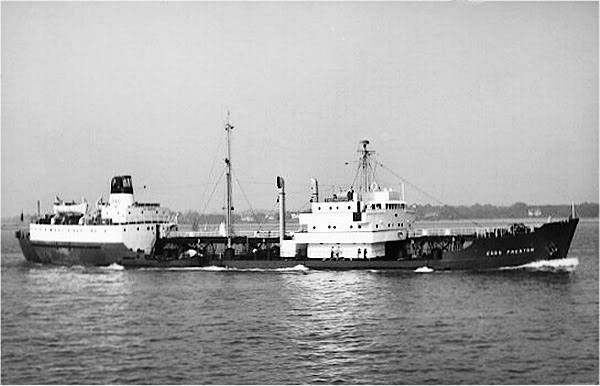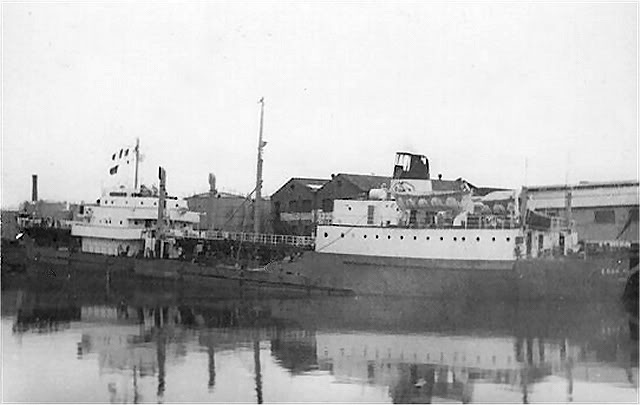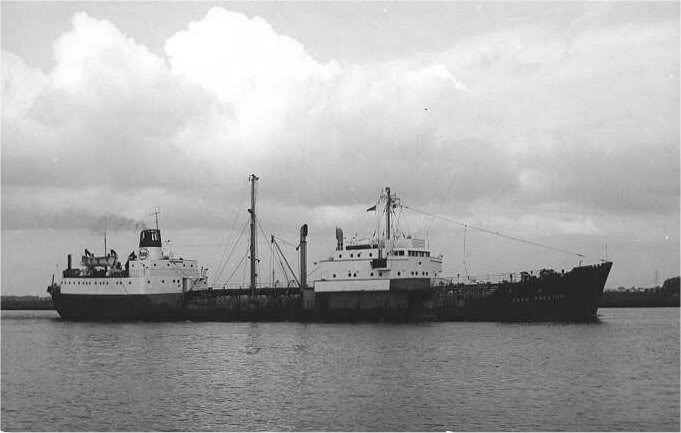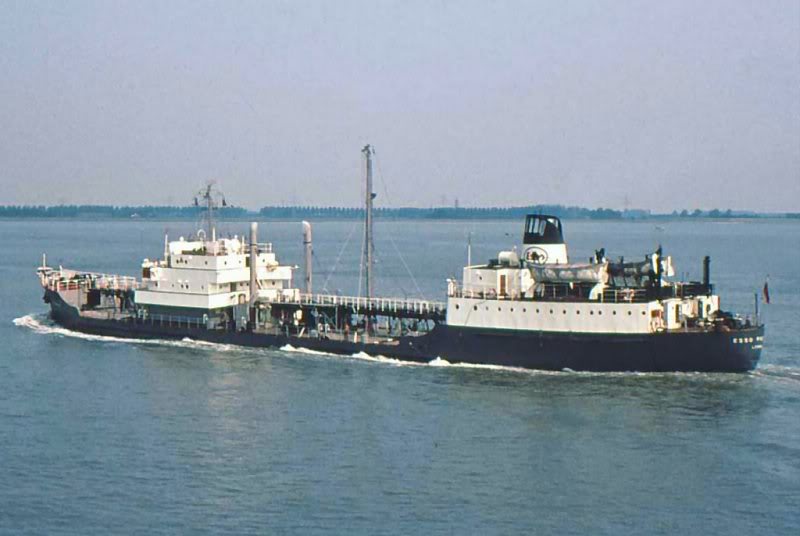Auke Visser´s Esso UK Tanker's site | home
Esso Preston - (1956-1977)
See also : Letter of the month in Ship's Monthly & More photos "Esso Preston" & Building, Launch & General Plan "Esso Preston"
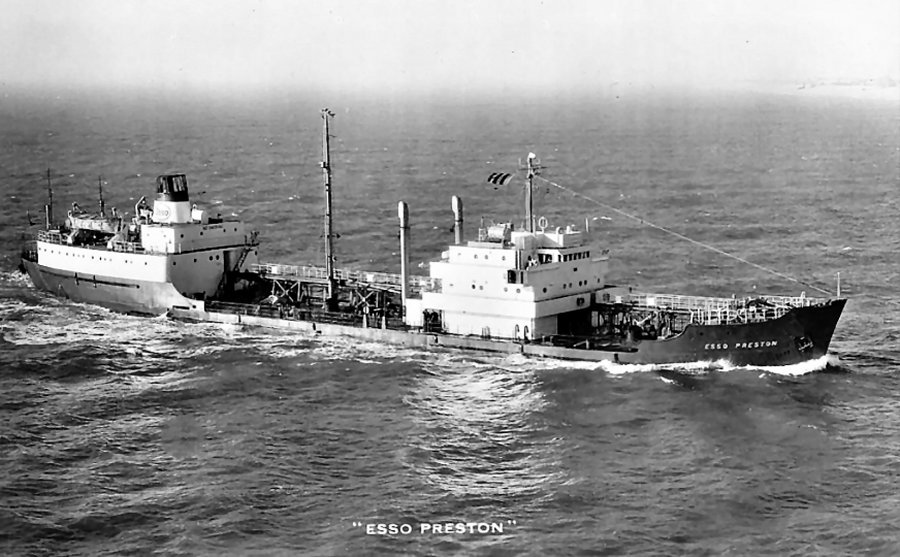
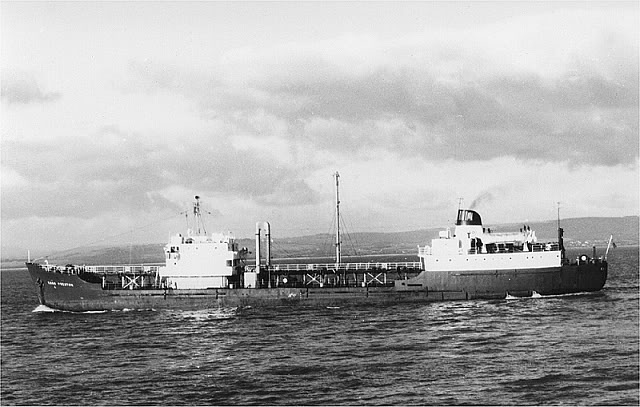
"Esso Preston".
"Esso Preston".
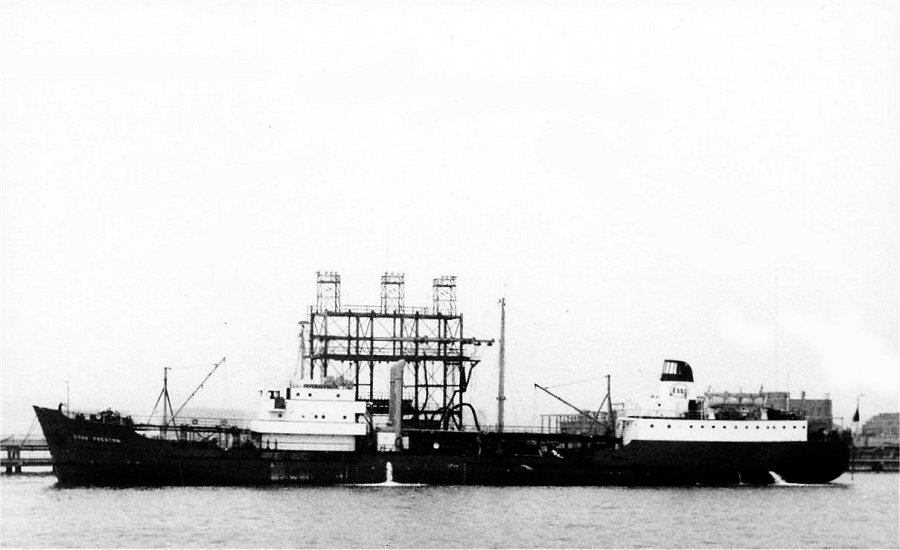
"Esso Preston".
"Esso Preston".
"Esso Preston".
"Esso Preston".
( Photo Copyright Bob Scott )
"Esso Preston", at Plymouth.
The Miramar Ship Index for "ESSO PRESTON"
IDNo:
|
5108259
|
Year:
|
1956
|
Name:
|
ESSO PRESTON
|
Launch Date:
|
14.12.1955
|
Type:
|
Tanker
|
Date of completion:
|
03.1956
|
Flag:
|
GBR
|
Keel:
|
DWT:
|
2790
|
Yard No:
|
849
|
Length overall:
|
91.1
|
Ship Design:
|
|
LPP:
|
85.6
|
Country of build:
|
GBR
|
Beam:
|
12.8
|
Builder:
|
Hall Russell
|
Material of build:
|
Location of yard:
|
Aberdeen
|
|
Number of screws/Mchy/Speed(kn):
|
1T-10.5
|
||
Owner as Completed:
|
Esso Petroleum Co., Ltd., UK
|
Subsequent History:
-
Disposal Data:
Scrapped at Aviles 01.04.1975.
History :
ON
|
LR/IMO
|
ID
|
Year
|
Name
|
Tons
|
Name change
|
Main Owner
|
5108259
|
5108259
|
1956
|
ESSO PRESTON
|
1965
|
-
|
Esso Petroleum Co., Ltd.
|
John Kirkham wrote about the "Esso Preston" the folowing;
ESSO PRESTON
Built by Hall,Russell, Aberdeen, as their Yard Number 849, launched in December 1955 and completed in March 1956. She under-took her sea trials on 12 March 1956.
She was the most highly specialised ship in Esso`s coastwise fleet, and their first bitumen tanker. She was steam-driven to provide heating for her cargo of 2050 tons of bitumen. She also carried heavy fuel oils. The bitumen was loaded at a temperature of 280-300F and was kept at this temperature during voyages by a bank of steam-heated coils in each of her five cargo tanks. Her hull con-struction comprised two skins to minimise heat loss; this space being used for water ballast when cargo was not being carried. The ship`s heating was provided by two, three-furnace, multi-tubular boilers, each having a maximum evaporation of 14,000lb of steam per hour and a heating surface of 2,265sq.ft. at a working pressure of 225lb per sq.in. Steam from these boilers also drove her triple expansion engine, which developed 1,350 IHP. Her two cargopumps each had a capacity of 125 tons per hour and were steam-jacketed. Her fire-fighting gear included a steam-smothering system to all cargo tanks, bunker tanks, cofferdams and pump-room.
1965 tons gross, 2790 tons deadweight.Top speed 10.5 knots.
Length 299ft, beam 42ft, depth 20ft 9 ins, draught 16ft.
Crew was 25, comprising 9 officers, 4 petty officers and 12 ratings. The Master and Chief Engineer each had a bedroom, bathroom
and dayroom and the other officers all had private cabins; all the officers were berthed in the bridge accommodation. The furniture for
officers` accommodation was in oak with the saloon panelled in figured chestnut. The officers` saloon and lounge were located aft on
the poop deck. Petty officers each had a separate cabin and shared a combined mess and recreation room on the poop deck. The
ratings were berthed in double cabins with combined mess and recreation rooms. The two-berth hospital was located aft.The ship`s
basic design was drawn up by Esso`s Marine Department.
“ESSO PRESTON” was named after the town of Preston in Lancashire, which she frequently visited with her specialised cargo. In her later years, she was on a regular run supplying fuel oil to Barking power station on the River Thames, especially after the dispo-sal of the ex Maracaibo tankers ( ESSO CHELSEA, ESSO FULHAM, ESSO LAMBETH and ESSO WANDSWORTH, which were engaged in that trade.)
On 4/1/1963, she was in collision in the Thames, with MV “HERMANN BLUME”, which was at anchor, off Goldsmith`s Wharf, Grays.
Minor damage was caused to both ships. On 31/1/1975, she ran aground on the Cow and Calf rocks, near Roches Point, County Cork.
She was en route to the Whitegate Refinery, from Belfast to take on a cargo. She was holed in Numbers 1, 3 and 4 of her cargo spa-ces.
She refloated under her own power within 45 minutes and anchored in the lower harbour.
She sailed to Cardiff 2/2/1975, arriving 3/2/1975. She was examined in Mountstewart Drydock 16/2/1975, severe damage being found to her cargo tanks and pipework.
Laid up at Cardiff 16/2/75-27/3/75 pending a decision on repairs. Left Cardiff 27/3/1975 under tow to Spanish shipbreakers at Aviles, arriving 1/4/1975
|
Delivered to Esso on 19 March 1956 at Fawley. Vessel was Esso's first bulk bitumen tanker. When not engaged in carrying bitumen, also transported heavy fuel oils, particularly in later years of service. Bitumen was loaded at a temperature of 280-300F and was kept at this temperature during voyages by a bank of steam-heated coils in each of the five centre cargo tanks.
In later years, ESSO PRESTON was on a regular run supplying fuel oil to Barking Power Station on the River Thames.
On 14 January 1959 ESSO PRESTON was in collision in the River Mersey with MV VELARDE which was at anchor off Sandon Dock. Sustained damage to sheer structure, deck plating, starboard ballast tank, hatch coaming, main and boat deck guardrails and poopdeck guardrails and flagstaff.
On 4 January 1963 ESSO PRESTON collided in the River Thames with MV HERMANN BLUME which was at anchor off Goldsmith's Wharf, Grays. Minor damage caused to both ships.
At 20:53 local time on 31 January 1975 ESSO PRESTON ran aground on Calf Rock, near Roches Point, County Cork, during a moderately heavy sea. Had been en route to the Whitegate Refinery to take on a cargo of fuel oil. Holed in numbers 1, 3 and 4 of cargo spaces. Refloated under own power within 13 minutes and anchored off Whitegate Jetty for the night. Port anchor had to be jettisoned to avoid being dragged further on to the rock if it had been weighed.
Received approval from Lloyds to sail to Cardiff 2 February 1975, arriving on 3rd. Examined in the Mount Stewart Drydock of Bristol Channel Shiprepairers Ltd, Cardiff on 6 February, severe damage being found to cargo tanks, pipework and engine room. Full damage survey was carried with Lloyds on 7 February.
ESSO PRESTON remained laid up at Cardiff pending a decision on repairs, which were later found to be uneconomic. Declared a constructive total loss to Esso's Underwriters on 14 February, as the value of the hull and machinery was estimated at £84,000 and the cost of repairs estimated at £200,000. Crew was advised on same day and paid off, articles closed on 17 February. Deck log was closed the following day and ship's log sent to DTI Cardiff.
Replaced in 1981 with ESSON AVON.
Sold to Jose Luis Blanco (shipbreakers) at Aviles, near Gijon, Spain. Arrived there 1 April 1975.
|
